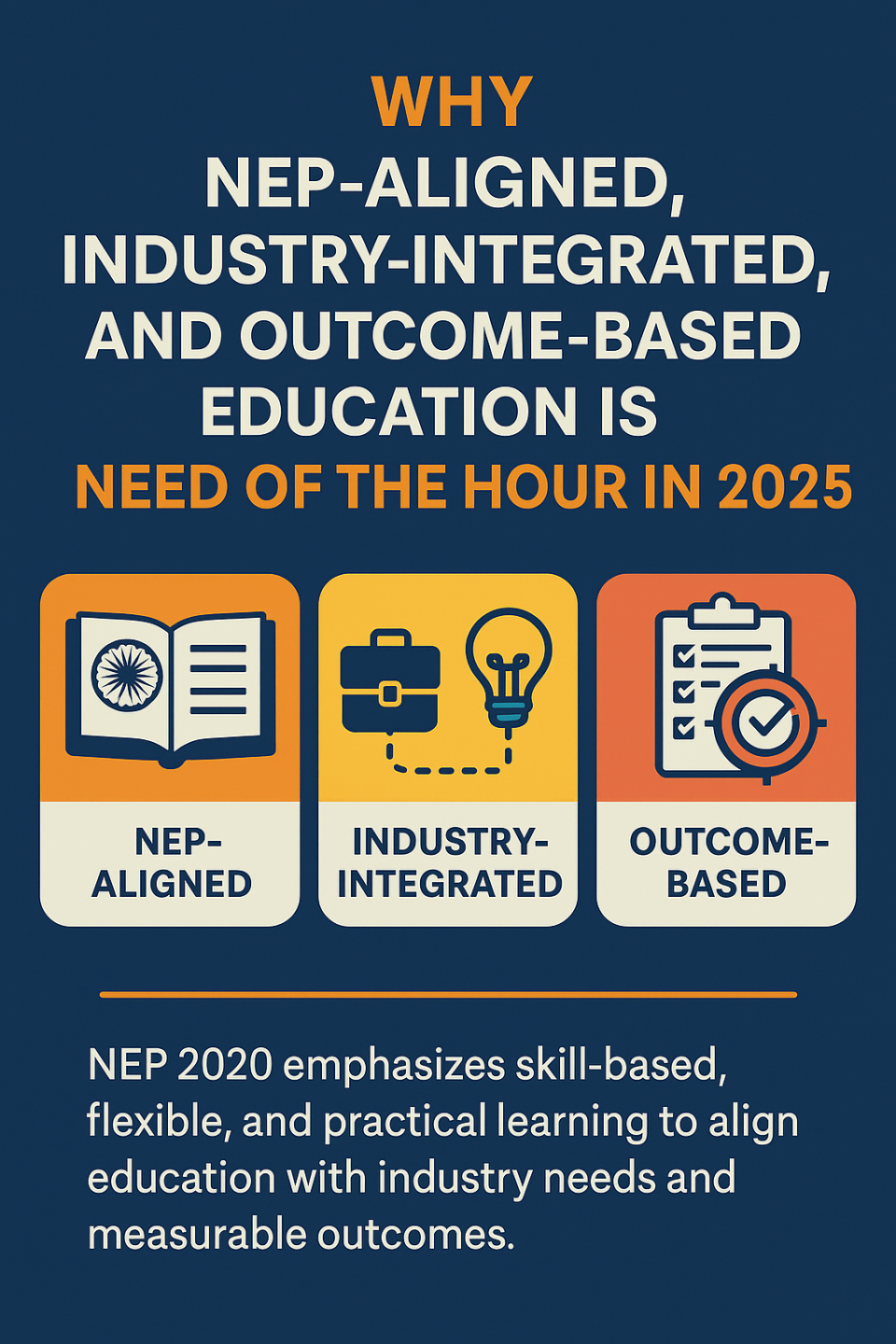1. NEP 2020: A Paradigm Shift
The National Education Policy (NEP) 2020 is India’s most progressive education reform in decades. It emphasizes:
- Multidisciplinary learning
- Flexible degree structures
- Skill-based and experiential education
- Integration of vocational education from school to higher education
🔹 Need in 2025: With AI, automation, and global competition reshaping the job market, rigid and outdated academic models are no longer relevant. NEP sets the foundation for a learner-centric and employability-driven system.
2. Industry-Aligned Curriculum: Bridging the Skill Gap
According to NASSCOM, over 45% of Indian graduates are not job-ready due to lack of practical skills. Industry-aligned programs:
- Are co-designed with industry partners
- Include real-world projects, internships, and certifications
- Equip students with tools and software used in real jobs (e.g., AI, Cloud, VLSI, Cybersecurity)
🔹 Need in 2025: India’s booming sectors like semiconductors, electric vehicles, and fintech demand domain-specific, tech-enabled talent—not just degrees.
3. Outcome-Based Education (OBE): Measuring Real Learning
OBE shifts the focus from input (syllabus) to output (skills and competencies). It ensures:
- Clearly defined learning outcomes
- Continuous assessment and feedback
- Focus on what a student can do after the course
🔹 Need in 2025: Employers no longer hire based on qualifications alone—they seek proof of skills. OBE ensures accountability and relevance in education.
4. Startups, Gig Economy & Tech Evolution
The workforce is changing:
- Rise of freelancing, entrepreneurship, and remote work
- Rapid tech disruption every 2–3 years
- Need for continuous upskilling
🔹 Need in 2025: Students need adaptive, modular, and skill-integrated education that prepares them to work in both structured corporate jobs and flexible gig roles.
5. India’s Demographic Advantage – At Risk
With the world’s largest youth population, India must harness its demographic dividend. Failure to provide relevant education risks:
- Massive youth unemployment
- Underemployment and economic slowdown
🔹 Need in 2025: Only industry-integrated, NEP-aligned, and outcome-driven programs can convert India’s youth into a globally competitive workforce.
✅ Summary
| Component | Why It’s Needed in 2025 |
|---|---|
| NEP-Aligned | Accountability, skill validation, and real-world application |
| Industry-Aligned | Employability, internships, job-readiness |
| Outcome-Based | Accountability, skill validation, real-world application |
📣 Final Note:
“Degrees don’t get jobs anymore. Skills do.”
In 2025, education must be redefined—from teaching to training, from theory to outcomes, and from classrooms to careers.
Mr. Vimal Manhotra
Director Finance & Strategic Initiatives


